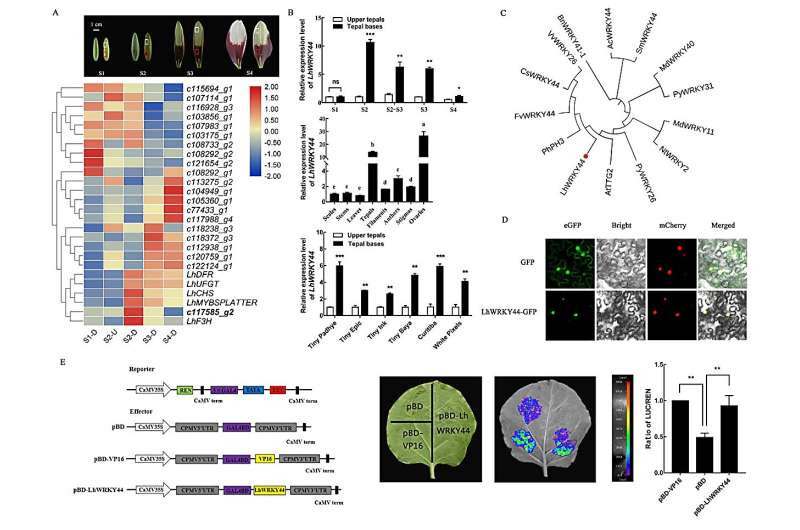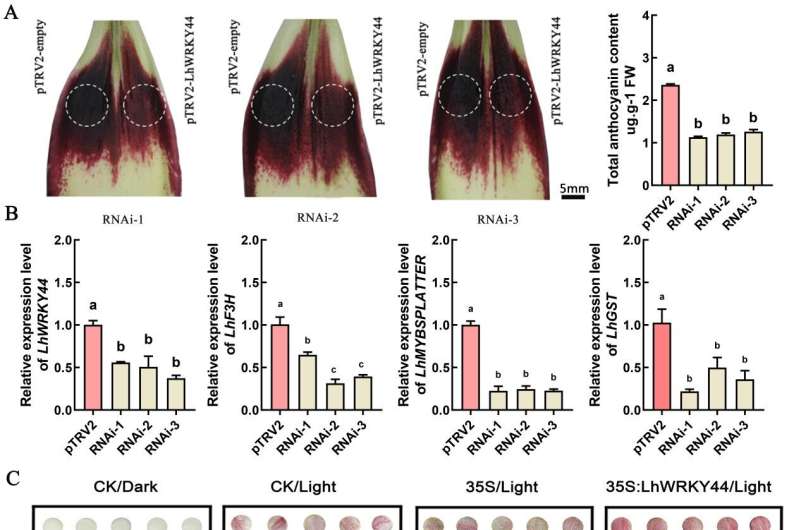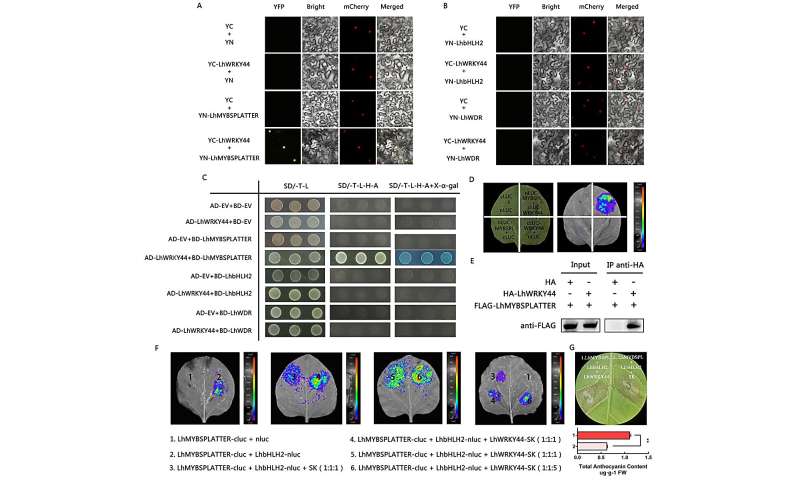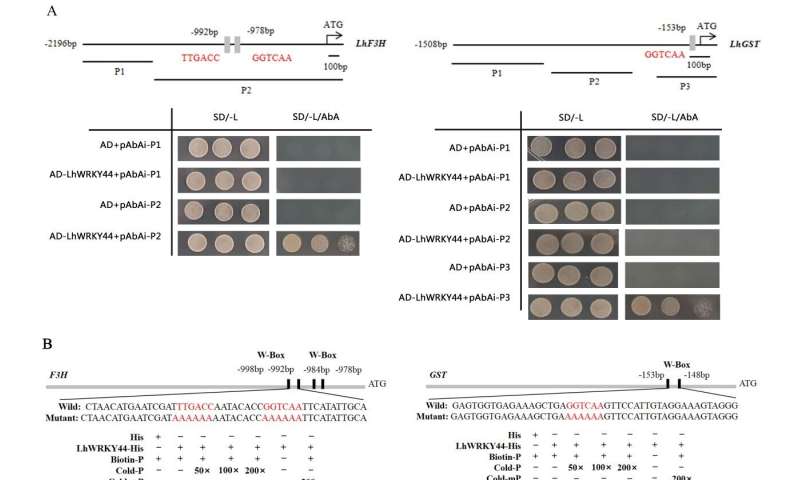This article has been reviewed according to Science X's editorial process and policies. Editors have highlighted the following attributes while ensuring the content's credibility:
fact-checked
trusted source
proofread
Examining the role of LhWRKY44 in anthocyanin accumulation

Anthocyanins are a group within the flavonoid family of plant secondary metabolites that determine the color of flowers and organs and protect plants from reactive oxygen species produced under environmental stresses.
Spatially and temporally distinct deposition of anthocyanin accumulation in tepals of lilies produces multicolor and various color patterning, including bicolor splatter-type spots, raised spots, and blush marks spot.
Asiatic hybrid lilies Tango Series cultivars, in which anthocyanins are specifically colored in the basal tepals (referred to as splatter-type spots) have special ornamental value. However, the underlying mechanism has not been well explored.
An article has been published on Horticulture Research with title "Multifaceted roles of LhWRKY44 in promoting anthocyanin accumulation in Asiatic hybrid lilies (Lilium spp.)"

Based on previous transcriptome data, researchers screened a WRKY TF LhWRKY44 from Asiatic hybrid Tango series lily cultivars, which was closely related to anthocyanin accumulation. In this study, researchers characterized the roles of the LhWRKY44 gene and elucidated the mechanism in which anthocyanin accumulation was regulated by LhWRKY44.
LhWRKY44 physically interacted with LhMYBSPLATTER protein and directly bound to the LhMYBSPLATTER promoter, which enhanced the effect of the LhMYBSPLATTER-LhbHLH2 MBW complex activator on anthocyanin accumulation. Moreover, LhWRKY44 activated and bound to the promoters of the anthocyanin biosynthesis-related genes LhF3H and the intracellular anthocyanin-related glutathione S-transferase gene LhGST.
Further results showed that LhWRKY44 participated in light and drought-induced anthocyanin accumulation, and improves the drought tolerance in lily by activating stress-related genes. Additionally, researchers accidentally noted that overexpression LhWRKY44 confers early flowering in transgenic Arabidopsis.
-

LhWRKY44 interacts with LhMYBSPLATTER and enhances the interaction between LhMYBSPLATTER and LhbHLH2. Credit: Horticulture Research -

LhWRKY44 binds to LhF3H and LhGST promoters and activates their expression. Credit: Horticulture Research
Thus, LhWRKY44 might serve as a major regulator that integrated the environmental signal pathway and development signal pathway to determine the level and patterning of anthocyanin accumulation in Asiatic hybrid Tango series lily cultivars. The findings indicated that multifaceted roles of LhWRKY44 in promoting anthocyanin accumulation in Asiatic hybrid lilies (Lilium spp.) and enrich the effects of the TF transcriptional regulation of anthocyanins.
More information: Mengmeng Bi et al, Multifaceted roles of LhWRKY44 in promoting anthocyanin accumulation in Asiatic hybrid lilies (Lilium spp.), Horticulture Research (2023). DOI: 10.1093/hr/uhad167
Provided by NanJing Agricultural University



















